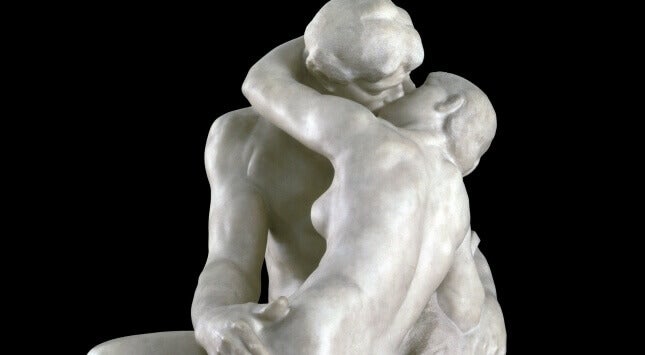If kissing is an everyday act, it also contains a kind of conundrum, there is no absolute certainty about the role they play, there is also no consensus to define it as instinctive or learned behavior, science has already explored it and its goal was to determine what the anatomy of the kiss is and its effects.
Charles Darwin, the father of evolutionary theory, said the gesture was an act of sociability. In his work “The Expression of Emotions in Humans and Animals,” Darwin defines it this way: he says that kissing is the result of an innate desire to be recognized and build relationships. It’s a way to “receive pleasure through close contact with a loved one. “
- However.
- There is evidence to question these claims.
- It has been discovered.
- For example.
- That about 10% of the world’s cultures do not include kissing in their customs.
- There are also societies that give this gesture a different meaning than the emotional one.
- Therefore.
- The anatomy of the kiss.
- In the universal sense.
- Does not come down to an expression of love.
“The good thing about the years is that they heal the wounds, the bad thing about kisses is that they are addictive” – Joaquin Sabina-
It can be said, from a physical point of view, that a kiss is “the word-to-mouth orientation of two individuals or the pressure of one person’s lips against the body of another”. This is the definition of Sheril Kirshenbaum, a research biologist at the University of Texas. This would be the most basic anatomy of a kiss. It should be added that giving a kiss moves 32 anatomical elements.
From a physiological point of view, kissing is a little more complex, this gesture would be something like an exchange of sensory information, this includes the senses of taste, smell and touch, also involves a chemical reaction, whose messages are pheromones. .
When a kiss begins, it initiates impressive hormonal activity in the body, oxytocin begins to circulate in the blood, as many know, this element is known as the ‘love hormone’ and generates well-being.
However, at the end of a kiss, there is a strong serotonin discharge that also creates a sense of well-being. Therefore, it is reasonable to say that the anatomy of the kiss is also the anatomy of a pleasant moment.
When discussing whether kissing is instinctive or learned behavior, several facts can tip the scales toward the second explanation. One is the historical use of kisses.
For example, in the Middle Ages there was a time when it was forbidden, at that time the kiss was practiced only by illiterate servants, they used it to seal contracts because they could not sign them.
Similarly, it has been established that the anatomy of the kiss does not have the same meaning for women and men, women appreciate it more. They see it as an end in themselves and appreciate this gesture before and after sex, while men associate it directly with sexual preparation.
Although there seems to be a predominance of the cultural over instinctive, it also has a great significance in the act of kissing. It is possible to try it with a simple fact. Our ancestors learned to more easily detect the color red. This allowed them to locate ripe fruit more quickly. These elements were essential to their survival.
Many ancient cultures also valued people’s lips, especially women, so many of these cultures have developed methods to obtain “inverted lips”, that is, projected outwards, in them the red color was more noticeable. This underlines that a lip-to-survival association has been established, in this sense instinctive thesis would create a stronger foundation.
When we kiss another person we exchange about 40,000 microorganisms, saliva production is stimulated and this temporarily improves breathing, it has been proven that those who kiss their partner in the morning are less likely to get sick. It also comes down. Although many puzzles remain to be solved, it is true that the anatomy of the kiss encloses wonderful mysteries related to happiness and life.

